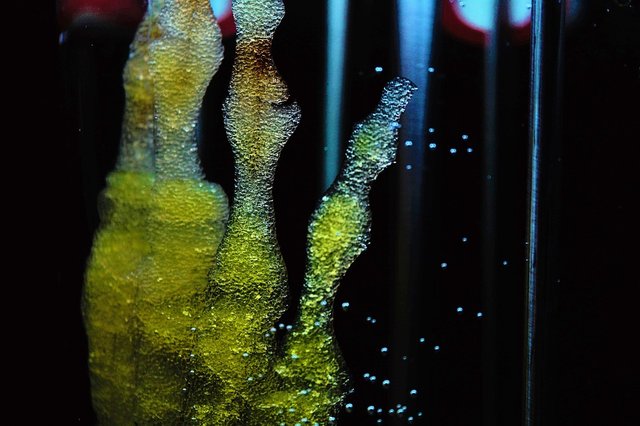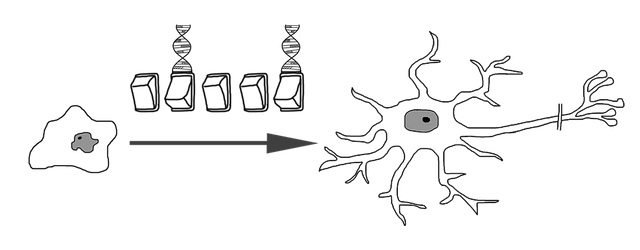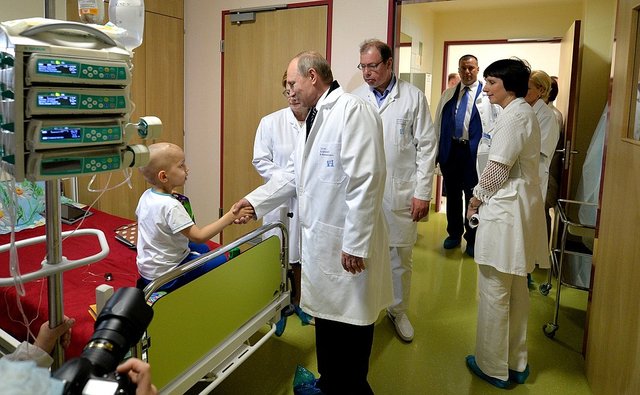Two scientists considered pioneers in stem cell research, John Gurdon of Britain and Shinya Yamanka of Japan, have been awarded this year's Nobel Prize in Medicine. They proved that the mature cells of the body can be converted again into stem cells or primary cells. Beyond the stem cells, specific tissues such as skin, blood, muscles, muscles and bones are formed. Or say that the whole body is made. Seeing these characteristics of stem cells, scientists began to think that we could one day create new tissue from stem cells and replace it with spinal cord injury and replace damaged tissue in various diseases like Parkinson's disease.

Source
Initially it was assumed that it is impossible to convert the body's mature cells back into stem cells. This means that new stem cells can only be acquired from embryos. As the use of embryos for stem cell research started, a big controversy started. Many people raised ethical questions on this technology and some countries had also banned this research. But Gurdon of Cambridge University and Yamanka of Kyoto University proved that reprogramming adult cells can then be transformed into embryonic stem cell-like conditions.
This discovery showed the world the way of regenerative medicine or reconstruction of damaged tissue. This research has not yet led to any tangible results towards medical treatment, but researchers have started research on disease-oriented stem cells and person-specific stem cells to study diseases such as heart disease, diabetes and Alzheimer's.
Relief to scientists
Gurdon is also considered the father of the cloning technique. He surprised the scientific community of the world by preparing a clone of the frog in 1962. From the stem cell, he removed the nucleus from the frog's egg cell and replaced it with the nucleus of a cell taken from the gut of a tedpole. In this way, the frog's egg developed into a healthy clone of tedpoles. This was a very surprising discovery because at that time it was not clear whether different types of cells in the body had different DNA or that all cells had the same genetic information.

Source
Gurden's experiments proved that all cells have the same genetic code, and each cell can be made up of an entire organism or a specific part of its body.
The cloning technique was in oblivion for several decades, but Scottish scientist William Ian Wilmut adopted Gurdon's research on mammals for the first time in 1997, and created a clone of the Dolly sheep to create a worldwide panic. A year later, researchers produced the first human inflammatory stem cells. Both of these scientific achievements gave rise to the idea of medical cloning. The idea was to insert the patient's skin cell into the undesired egg to bring it back to its primary state. After this, the embryonic stem cells should be converted into a tissue or organ that needs to be converted into the patient's body. Since the patient will have their own gene group in the new tissue, their chances of being rejected by the body's immune system will be very low. But where to get human eggs for this? The car of stem cell research gets stuck here.
Scientists began to find a way to convert mature cells into stem cells again. Nearly 40 years after Gurden's discovery, Japanese scientist Yamanaka discovered a surprisingly simple way of converting adult cells back into stem cells. They entered some skin cells of mice in 2006 and converted them into stem cells. In this way, they proved that the growth in mature cells can be reversed and converted into embryonic cells.
Yamanaka's discovery brought great relief to scientists who were finding it difficult to pursue their research into stem cells due to ethical controversies. Dr. Deepak Srivastava, head of Roddenberry Stem Cell Biology Center in San Francisco, says that a patient with Alzheimer's cannot be removed from the brain for examination, but we can study his skin cell by turning it into a stem cell . Dr. Srivastava also says that the goal of personalized medicine can be achieved with stem cells.
With the study of sick cells, doctors will now be able to decide which medicines will be right for the patient. Very soon scientists are expecting this technique to create insulin-producing cells for patients with type 1 diabetes and new neurons for patients suffering from spinal cord injury. They also intend to convert the sick tissues directly into a healthy state through reprogramming. Next year, a Japanese team will try to remove macular degeneration disease in the eye using stem cell technology.

Source
Keep going the Research
Many Western policymakers believe that after Yamanaka's research, there is no need for research on human embryonic stem cells, but Yamanca himself says that embryonic stem cells are still very important for research. Their use should not stop. On the other hand, the safety of stem cells is also being questioned. If the important gene used for reprogramming is found to be responsible for cancer, the transformed cells will also be at risk of cancer.
This post earned a total payout of 3.108$ and 2.337$ worth of author reward which was liquified using @likwid. To learn more.
Downvoting a post can decrease pending rewards and make it less visible. Common reasons:
Submit
This post has received a 51.52 % upvote from @boomerang.
Downvoting a post can decrease pending rewards and make it less visible. Common reasons:
Submit
You got a 75.00% upvote from @minnowvotes courtesy of @orion7!
Downvoting a post can decrease pending rewards and make it less visible. Common reasons:
Submit